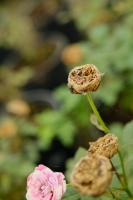When to Plant Bare Root Trees in Colorado
Colorado, with its diverse climatic zones and varied terrains, offers ample opportunities for planting trees. Trees not only enhance the landscapes but also help reduce soil erosion, protect water resources, and add to the natural beauty of the area. Planting bare root trees is a popular and cost-effective way to establish new trees across the state. However, to ensure their healthy growth and survival, it is essential to know when the best time for planting bare root trees in Colorado is.
Planting Season for Bare Root Trees in Colorado
Bare root trees are dormant trees that lack soil around their roots and are usually sold with no containers or burlap wrapping. They are sold in fall and winter, typically between November and April, as this is when the trees are in their dormant stage. The best time to plant the bare root trees is before the frost leaves the ground in Colorado, usually between late March and mid-May. If planting is delayed until after the spring frost period, it could negatively impact the tree's root system, leading to insufficient water uptake and poor growth. Hence, planting bare root trees during the correct window is critical to their success.
Factors Affecting Planting of Bare Root Trees in Colorado
Colorado's weather can be unpredictable, and planting bare root trees at the wrong time can lead to their death. Understanding the weather and other local factors can help determine the best time to plant the trees. An essential factor is the hardiness zone of the tree species. Some species require more time to establish their roots than others. The tree species' growth rate, soil conditions, amount of sunlight and water it needs, and exposure to wind and wildlife also affect the planting time.
Tips for Planting Bare Root Trees in Colorado
Planting bare root trees is a simple and cost-effective process, but some tips can help ensure the tree's health and survival. Here are some essential tips to consider:
Choose a suitable planting location with adequate sunlight, well-draining soil, and away from potential hazards, such as wires and buildings.
Prepare the soil by removing weeds, rocks, and other debris before digging a hole twice the width of the roots but no deeper than the depth of the root ball.
Do not let the roots dry out before planting. Keep them moist and covered until planting.
Prune any damaged roots and trim any broken branches before planting.
Place the tree in the hole, making sure the trunk's base is even with the surface and the roots face downwards.
Backfill the hole with soil and soaking the soil with water to ensure the soil settles tightly around the roots.
Mulch around the base of the tree to retain moisture and protect the roots from extreme temperatures.
Water the tree regularly, especially during the first year after planting.
Regularly check for pests, diseases, and other potential issues that can affect the tree's health.
Conclusion
In conclusion, planting bare root trees in Colorado can be advantageous, both ecologically and economically. However, the success of the trees largely depends on when they are planted. Late winter and early spring, before the frost leaves the ground, is the optimal time to plant bare root trees in Colorado, but various factors including weather, soil types, tree species, and other local conditions should be considered before planting. Proper planting methods and care can ensure the healthy growth and survival of the trees for years to come.

 how many times do yo...
how many times do yo... how many planted tre...
how many planted tre... how many pine trees ...
how many pine trees ... how many pecan trees...
how many pecan trees... how many plants comp...
how many plants comp... how many plants can ...
how many plants can ... how many plants and ...
how many plants and ... how many pepper plan...
how many pepper plan...































